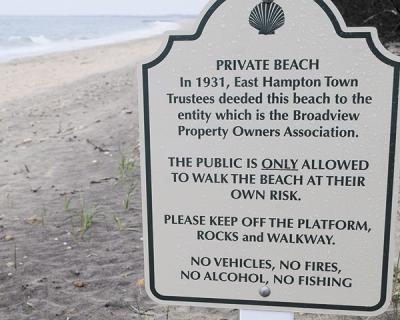May Legalize Apartments
May Legalize Apartments
East Hampton Town officials are discussing changes to the town code aimed at encouraging homeowners to create rental apartments to add to the town’s stock of affordable housing.
A 2007 law that allowed homeowners to attach an accessory apartment to a house, provided it is registered with the town and offered year-round at a capped maximum rent, has resulted in only about 15 new apartments throughout East Hampton. The law allows permits to be issued for up to 20 accessory apartments in each of the town’s five school districts.
A revision suggested by the town’s community housing committee and being discussed by the town board would allow apartments to be created in detached outbuildings. Whether new buildings could be put up for that purpose is being discussed, as is the size of lots where they could be built.
The amended law would allow more flexibility for homeowners, who are required at present to be living in the primary residence if an affordable apartment is to be rented. The code change would allow the property owner to take the apartment and rent the house to tenants.
The town board will schedule a public hearing on the proposed changes after finalizing a draft law.


